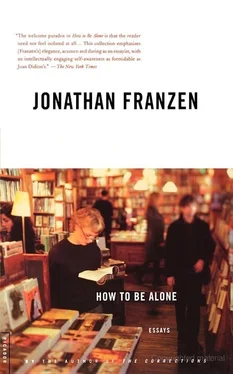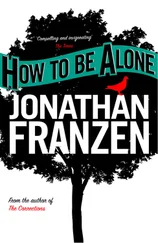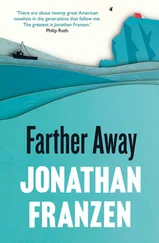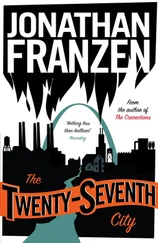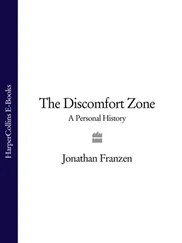The cigarette is famously the herald of the modern, the boon companion of industrial capitalism and high-density urbanism. Crowds, hyperkinesis, mass production, numbingly boring labor, and social upheaval all have correlatives in the cigarette. The sheer number of individual units consumed surely dwarfs that of any other manufactured consumer product. “Short, snappy, easily attempted, easily completed or just as easily discarded before completion,” the Times wrote in a 1925 editorial that Richard Kluger quotes, “the cigarette is the symbol of a machine age in which the ultimate cogs and wheels and levers are human nerves.” Itself the product of a mechanical roller called the Bonsack machine, the cigarette served as an opiate for assembly-line workers, breaking up into manageable units long days of grinding sameness. For women, the Atlantic Monthly noted in 1916, the cigarette was “the symbol of emancipation, the temporary substitute for the ballot.” Altogether, it’s impossible to imagine the twentieth century without cigarettes. They show up with Zeliglike ubiquity in old photographs and newsreels, so devoid of individuality as hardly to be noticeable and yet, once noticed, utterly strange.
Kluger’s history of the cigarette business reads like a history of American business in general. An industry that in 1880 was splintered into hundreds of small, family-owned concerns had by 1900 come under the control of one man, James Buchanan Duke, who by pioneering the use of the Bonsack roller and reinvesting a huge portion of his revenues in advertising, and then by alternately employing the stick of price wars and the carrot of attractive buyout offers, built his American Tobacco Company into the equivalent of Standard Oil or Carnegie Steel. Like his fellow monopolists, Duke eventually ran afoul of the trustbusters, and in 1911 the Supreme Court ordered the breakup of American. The resulting oligopoly immediately brought out new brands — Camel, Lucky Strike, and Chesterfield and Marlborough — that have vied for market share ever since. To American retailers, the cigarette was the perfect commodity, a staple that generated large profits on a small investment in shelf space and inventory; cigarettes, Kluger notes, “were lightweight and durably packed, rarely spoiled, were hard to steal since they were usually sold from behind the counter, underwent few price changes, and required almost no selling effort.”
Since every brand tasted pretty much the same, tobacco companies learned early to situate themselves at the cutting edge of advertising. In the twenties, American Tobacco offered five free cartons of Lucky Strike (“it’s toasted”) to any doctor who would endorse it, and then launched a campaign that claimed “20,679 Physicians Say Luckies Are Less Irritating”; American was also the first company to target weight-conscious women (“When tempted to over-indulge, reach for a Lucky instead”). The industry pioneered the celebrity endorsement (tennis star Bill Tilden: “I’ve smoked Camels for years, and I never tire of their smooth, rich taste”), radio sponsorship (Arthur Godfrey: “I smoked two or three packs of these things [Chesterfields] every day — I feel pretty good”), assaultive outdoor advertising (the most famous was the “I’d Walk a Mile for a Camel” billboard in Times Square, which for twenty-five years blew giant smoke rings), and, finally, the sponsorship of television shows like Candid Camera and I Love Lucy . The brilliant TV commercials made for Philip Morris — Benson & Hedges smokers whose hundred-millimeter cigarettes were crushed by elevator doors; faux-hand-cranked footage of chambermaids sneaking smokes to the tune of “You’ve got your own cigarette now, baby”—were vital entertainments of my childhood. I remember, too, the chanted words “Silva Thins, Silva Thins,” the mantra for a short-lived American Tobacco product that wooed the female demographic with such appalling copy as “Cigarettes are like girls, the best ones are thin and rich.”
The most successful campaign of all, of course, was for the Marlboro, an upscale cigarette for ladies that Philip Morris reintroduced in 1954 in a filtered version for the mainstream. Like all modern products, the new Marlboro was intensively designed. The tobacco blend was strengthened so as to survive the muting of a filter, the “flip-top” box was introduced to the national vocabulary, the color red was chosen to signal strong flavor, and the graphics underwent endless tinkering before the final look, including a fake heraldic crest with the motto Veni, vidi, vici , was settled on; there was even market-testing in four cities to decide the color of the filter. It was in Leo Burnett’s ad campaign for Marlboro, however, that the real genius lay. The key to its success was its transparency. Place a lone ranch hand against a backdrop of buttes at sunset, and just about every positive association a cigarette can carry is in the picture: rugged individualism, masculine sexuality, escape from an urban modernity, strong flavors, the living of life intensely. The Marlboro marks our commercial culture’s passage from an age of promises to an age of pleasant, empty dreams.
It’s no great surprise that a company smart enough to advertise as well as this ascended, in just three decades, to a position of hegemony in the industry. Kluger’s account of the triumph of Philip Morris is the kind of thing that business schools have their students read for edification and inspiration: to succeed as an American corporation, the lesson might be, do exactly what Philip Morris did. Concentrate on products with the highest profit margin. Design new products carefully, then get behind them and push hard . Use your excess cash to diversify into businesses structurally similar to your own. Be a meritocracy. Bid preemptively. Avoid crippling debt. Patiently build your overseas markets. Never scruple to gouge your customers when you see the opportunity. Let your lawyers attack your critics. Be classy — sponsor The Mahabharata . Defy conventional morality. Never forget that your primary fealty is to your stockholders.
While its chief competitor, R. J. Reynolds, was growing logy and inbred down in Winston-Salem — sinking into the low-margin discount-cigarette business, diversifying disastrously, and nearly drowning in debt after its leveraged buyout by Kohlberg Kravis Roberts & Company — Philip Morris was becoming the global leader in the cigarette industry and one of the most profitable corporations in the world. By the early nineties, its share of the domestic non-discount-cigarette market was eighty percent. The value of a share of Philip Morris stock increased by a factor of 192 between 1966 and 1989. Healthy, wealthy, and wise the man who quit smoking in ’64 and put his cigarette money into Philip Morris common.
The company’s spectacular success is all the more remarkable for having occurred in the decades when the scientific case against cigarettes was becoming overwhelming. With the possible exception of the hydrogen bomb, nothing in modernity is more generative of paradox than cigarettes. Thus, in 1955, when the Federal Trade Commission sought to curb misleading advertising by banning the publication of tar and nicotine levels, the ruling proved to be a boon to the industry, enabling it to advertise filter cigarettes for their implicit safety even as it raised the toxic yields to compensate for the filters. So it went with the 1965 law requiring warning labels on cigarette packs, which preempted potentially more stringent state and local regulation and provided a priceless shield against future liability suits. So it went, too, with the 1971 congressional ban on broadcast cigarette advertising, which saved the industry millions of dollars, effectively froze out potential new competitors by denying them the broadcast platform, and put an end to the devastating antismoking ads then being broadcast under the fairness doctrine. Even such left-handed regulation as the 1982 increase in the federal excise tax benefited the industry, which used the tax as a screen for a series of price increases, doubling the price per pack in a decade, and invested the windfall in diversification. Every forward step taken by government to regulate smoking — the broadcast ban, the ban on in-flight smoking, the welter of local bans on smoking in public places — moved cigarettes a step further back from the consciousness of nonsmoking voters. The result, given the political power of tobacco-growing states, has been the specific exemption of cigarettes from the Fair Labeling and Packaging Act of 1966, the Controlled Substances Act of 1970, the Consumer Product Safety Act of 1972, and the Toxic Substances Act of 1976. In the industry’s defense in liability suits, the paradox can be seen in its purest form: because no plaintiff can claim ignorance of tobacco’s hazards — i.e., precisely because the cigarette is the most notoriously lethal product in America — its manufacturers cannot be held negligent for selling it. Small wonder that until Liggett broke ranks this spring no cigarette maker had ever paid a penny in civil damages.
Читать дальше
Конец ознакомительного отрывка
Купить книгу
